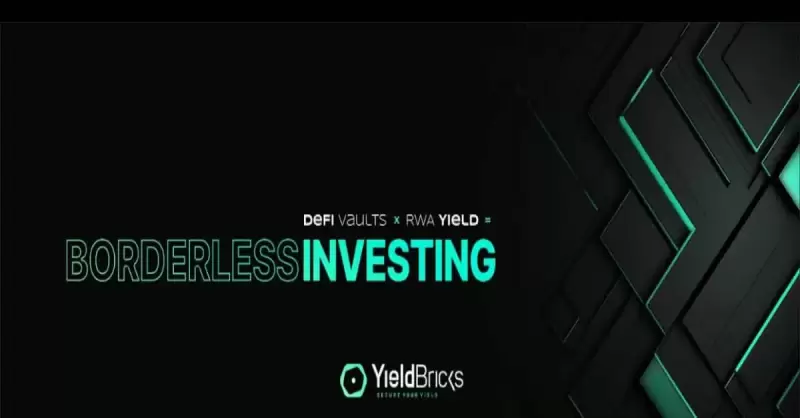 |
|
 |
|
 |
|
 |
|
 |
|
 |
|
 |
|
 |
|
 |
|
 |
|
 |
|
 |
|
 |
|
 |
|
 |
|
尽管链上治理具有复杂协议的潜力,但仍面临女巫攻击等挑战。 Futarchy 由 Robin Hanson 提出,引入预测市场,根据组织的福利指标来确定决策,激励参与者做出预测并给予相应奖励。通过押注福利措施的未来价值取决于具体政策,futarchy 旨在消除情绪并促进基于“群体智慧”的理性决策。实施预测市场需要自动做市商 (AMM) 来解决流动性问题,而 Gnosis 的 CFMM 实施的 LMSR 可以平衡流动性和预测准确性。

On-Chain Governance: From Games to Futarchy
链上治理:从游戏到 Futarchy
The discourse surrounding on-chain governance has been marked by contentious debate. While off-chain governance often suffers from cumbersome inefficiencies, on-chain governance has empowered developers to construct increasingly intricate protocols that grant users substantial sway in shaping network trajectories. Yet, these mechanisms are fundamentally akin to games that, when misconfigured or misaligned with appropriate incentives, possess the potential to steer the governed entity towards calamitous outcomes.
围绕链上治理的讨论一直充满争议。虽然链下治理常常面临效率低下的问题,但链上治理使开发人员能够构建日益复杂的协议,使用户在塑造网络轨迹方面拥有巨大的影响力。然而,这些机制从根本上类似于游戏,当配置错误或与适当的激励措施不一致时,有可能引导受治理实体走向灾难性的结果。
In her seminal work, "What is Futarchy? — Trading the Future," Freiderike Ernst, co-founder of Gnosis, elucidates prevalent methodologies underpinning on-chain voting. Given that the "one-person, one-vote" paradigm is susceptible to Sybil attacks on permissionless networks, whereby a single individual may fragment their capital across multiple accounts to cast a disproportionate number of votes, a user's voting power is typically weighted in proportion to their token holdings. Lotteries and token curated registries employ analogous techniques to mitigate Sybil attacks.
Gnosis 联合创始人 Freiderike Ernst 在她的开创性著作《什么是 Futarchy?——交易未来》中阐明了支持链上投票的流行方法。鉴于“一人一票”范式很容易受到无许可网络上的 Sybil 攻击,即单个人可能会将其资金分散到多个账户中以投出不成比例的选票,因此用户的投票权通常按比例加权他们持有的代币。彩票和代币管理注册中心采用类似的技术来减轻 Sybil 攻击。
Robin Hanson has proposed an alternative governance model termed "futarchy," which centers decision-making not on votes, but rather on the outcomes of prediction markets that evaluate the welfare measure of the organization, an indicator of the network's health or decline. Participants in these markets wager on the future value of the welfare measure.
罗宾·汉森(Robin Hanson)提出了一种名为“futarchy”的替代治理模型,该模型的决策重点不是投票,而是评估组织福利指标(网络健康或衰退的指标)的预测市场的结果。这些市场的参与者押注于福利措施的未来价值。
Betting is typically facilitated using outcome tokens, each of which represents a discrete outcome of the market and whose monetary value is contingent on the eventual welfare measure. Accurate predictions are rewarded, while erroneous predictions incur losses.
投注通常使用结果代币来促进,每个结果代币代表市场的离散结果,其货币价值取决于最终的福利措施。准确的预测会获得奖励,而错误的预测则会带来损失。
Harnessing outcome tokens, participants can even wager on the value of the welfare measure conditioned upon the implementation of a specific policy. For instance, a participant could place a bet that yields a profit if the policy is implemented and the welfare measure subsequently increases by a predetermined threshold, while the bet is voided if the policy remains unimplemented.
利用结果代币,参与者甚至可以根据特定政策的实施来押注福利措施的价值。例如,参与者可以进行投注,如果政策得到实施并且福利措施随后增加预定阈值,则可以产生利润,而如果政策仍未实施,则投注无效。
Consider the case of a publicly traded company that adopts its stock price as its welfare measure and contemplates the dismissal of its CEO. Futarchy would yield two predictions: the projected future stock price were the CEO to be terminated and the projected future stock price were the CEO to be retained. As illustrated in the accompanying chart, the decision that results in the highest possible welfare measure is executed. In this instance, since the projected stock price contingent on the CEO's dismissal exceeds that contingent on the CEO's retention, the CEO would be removed from the company's leadership. This approach removes the influence of emotions from the decision-making process, enabling the organization to make rational choices informed by the collective wisdom of its participants, thereby enhancing its overall value.
考虑一家上市公司的案例,该公司采用股价作为其福利衡量标准,并考虑解雇其首席执行官。 Futarchy 会产生两个预测:预计未来股价是要被解雇的首席执行官,预计未来股价是要保留的首席执行官。如附图所示,执行导致最高可能福利措施的决策。在这种情况下,由于首席执行官被解雇所带来的预计股价超过了首席执行官留任所带来的预计股价,因此首席执行官将被解除公司领导职务。这种方法消除了决策过程中情绪的影响,使组织能够根据参与者的集体智慧做出理性选择,从而提高其整体价值。
Market Makers for Prediction Markets
预测市场的做市商
The introduction of a market maker to facilitate transactions between participants introduces certain challenges. When futarchy is employed to assess more complex contingencies, the number of tokens in the associated market can rapidly escalate into the hundreds. In such scenarios, the "thin market problem" emerges, whereby the number of participants is insufficient to effectively adjust the probabilities of numerous outcomes. The logical solution is an automated market maker (AMM).
引入做市商来促进参与者之间的交易带来了一定的挑战。当使用 futarchy 来评估更复杂的突发事件时,相关市场中的代币数量可能会迅速增加到数百个。在这种情况下,就会出现“稀薄市场问题”,即参与者数量不足以有效调整众多结果的概率。合理的解决方案是自动做市商(AMM)。
A straightforward approach involves implementing the cost function of the logarithmic market scoring rule. However, this implementation precludes dynamic adjustments of liquidity, often resulting in a market that is either too shallow to accommodate all participants or excessively deep to generate meaningful results. The liquidity-sensitive logarithmic market scoring rule (LS-LMSR) addresses this issue, but introduces new vulnerabilities, the most significant of which is an arbitrage vulnerability inherent to all scoring rule market makers except LMSR.
一种简单的方法涉及实施对数市场评分规则的成本函数。然而,这种实施排除了流动性的动态调整,通常会导致市场要么太浅而无法容纳所有参与者,要么太深而无法产生有意义的结果。流动性敏感的对数市场评分规则(LS-LMSR)解决了这个问题,但引入了新的漏洞,其中最重要的是除 LMSR 之外的所有评分规则做市商固有的套利漏洞。
Crypto stalwarts—constant function market makers (CFMMs)—such as Balancer, manage liquidity more effectively by enabling liquidity providers to dynamically deposit and withdraw liquidity, and are more familiar to cryptocurrency enthusiasts. However, CFMMs share the same limitations as LS-LMSR. Notably, during its involvement in prediction markets, Gnosis developed a CFMM implementation of the LMSR, which appears to combine the advantages of both approaches.
加密货币中坚力量——恒定函数做市商(CFMM)——例如 Balancer,通过使流动性提供者能够动态存入和提取流动性来更有效地管理流动性,并且为加密货币爱好者所熟悉。然而,CFMM 与 LS-LMSR 具有相同的局限性。值得注意的是,在涉足预测市场期间,Gnosis 开发了 LMSR 的 CFMM 实现,它似乎结合了两种方法的优点。
免责声明:info@kdj.com
所提供的信息并非交易建议。根据本文提供的信息进行的任何投资,kdj.com不承担任何责任。加密货币具有高波动性,强烈建议您深入研究后,谨慎投资!
如您认为本网站上使用的内容侵犯了您的版权,请立即联系我们(info@kdj.com),我们将及时删除。
-

- 在持续的波动性中,链接有望下降
- 2025-04-11 06:50:12
- 在本文中,我们将探讨Link的价格动作,Chainlink的本地令牌及其潜在价格下降。
-

-

- 黄金价格在美国 - 中国贸易紧张局势上升的新创纪录
- 2025-04-11 06:45:12
- 在经济不确定性期间,黄金再次证明了它作为避风港的地位,今天早些时候达到了新的历史最高水平。
-

- 标题:Binance增加了对新比特币(BTC)Staking协议巴比伦(BABY)的支持
- 2025-04-11 06:45:12
- 通过交易量,世界上最大的加密交换平台正在增加对新比特币(BTC)均值协议的支持。
-

-

-

- 最佳加密赌场即时提款2025
- 2025-04-11 06:35:13
- 听起来更好的是:赢得大笔奖金,然后等待几天才能到达钱,或者立即撤离在加密货币赌场玩?
-

- BTC-Pegged Meme Coin Coin BTCBULL筹集了超过100万美元的预售
- 2025-04-11 06:35:13
- 当改变最快的创新和动力的区块链生态系统之一时,会发生什么?
-

- 比特币交易贸易财务(ETF)已成为塑造机构投资趋势的主要压力
- 2025-04-11 06:30:12
- 比特币ETF在塑造加密货币的机构投资的未来方面发挥了关键作用。通过提供受调节的,手和液体的替代品

















![super Mario World Koopa Troopa 100%96⭐️ +硬币[AO Vivo] super Mario World Koopa Troopa 100%96⭐️ +硬币[AO Vivo]](/uploads/2025/04/10/cryptocurrencies-news/videos/super-mario-koopa-troopa-coin-ao-vivo/image-1.webp)










































